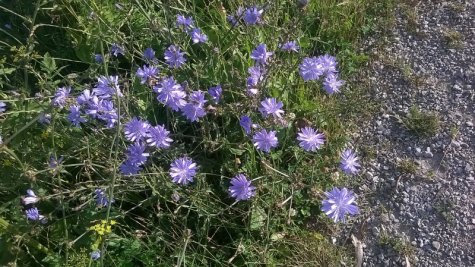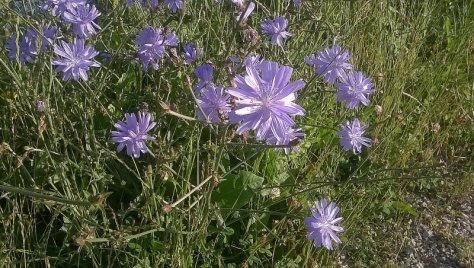Pretty and adapted alien species
Photo Kaido Einama
Translation: Liis
In the Pae park large numbers flower this year
Chicory Harilik sigur Cichorium intybus
The thing with chicory is that it is not an ancient native species in Estonian nature and it has not blended into the natural vegetation. We can find chicory in fallow lands, at the verges of all kinds of roads, on railway dams, sometimes near houses: in company with grasses and plantains, or as an ornamental in garden beds.
The coffee shrub is a tropical species but coffee drinking is a quite old habit in Estonia too. In poor years or years of war chicory coffee was used as a substitute. The plant has a thick and fleshy root, from which after drying and grinding a bitter ”coffee substitute” was prepared. Thus chicory seeds reached Estonia and chicory was successfully grown in our farms. The plant occurs in all continents of the world except for the Poles.
The inflorescences or flowerheads of chicory are somewhat similar to those of the cornflower, but have different kinds of flowers: chicory only has ray florets and no disk florets. While the flowerheads of cornflower are at the tip of stems and stem branches, the flowerheads of chicory are in the leaf axils on the stem, with short flower stalks. The colour of the flowerheads is bright blue, seldom pink or white.
The stem of the plant is upright and angular, hollow, covered with rough hairs. It branches in the upper part. Leaves on stems are few, small and oblong.
Chicory










